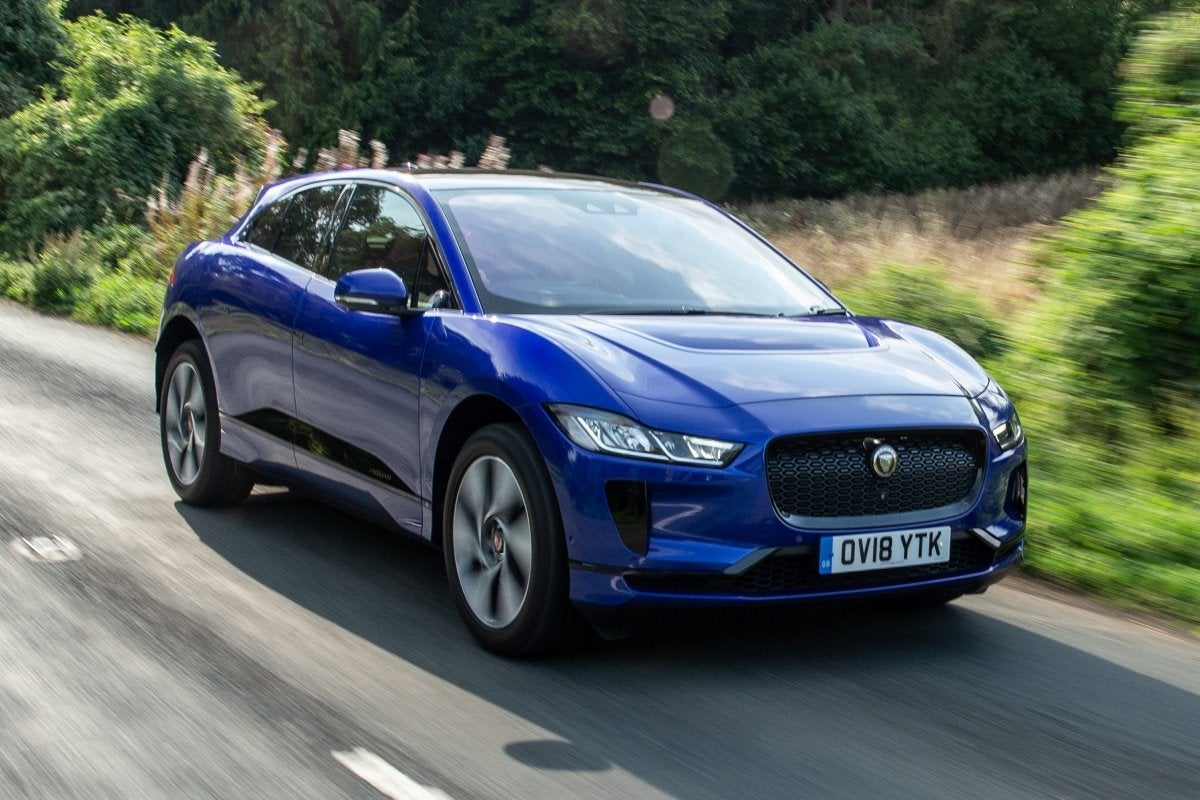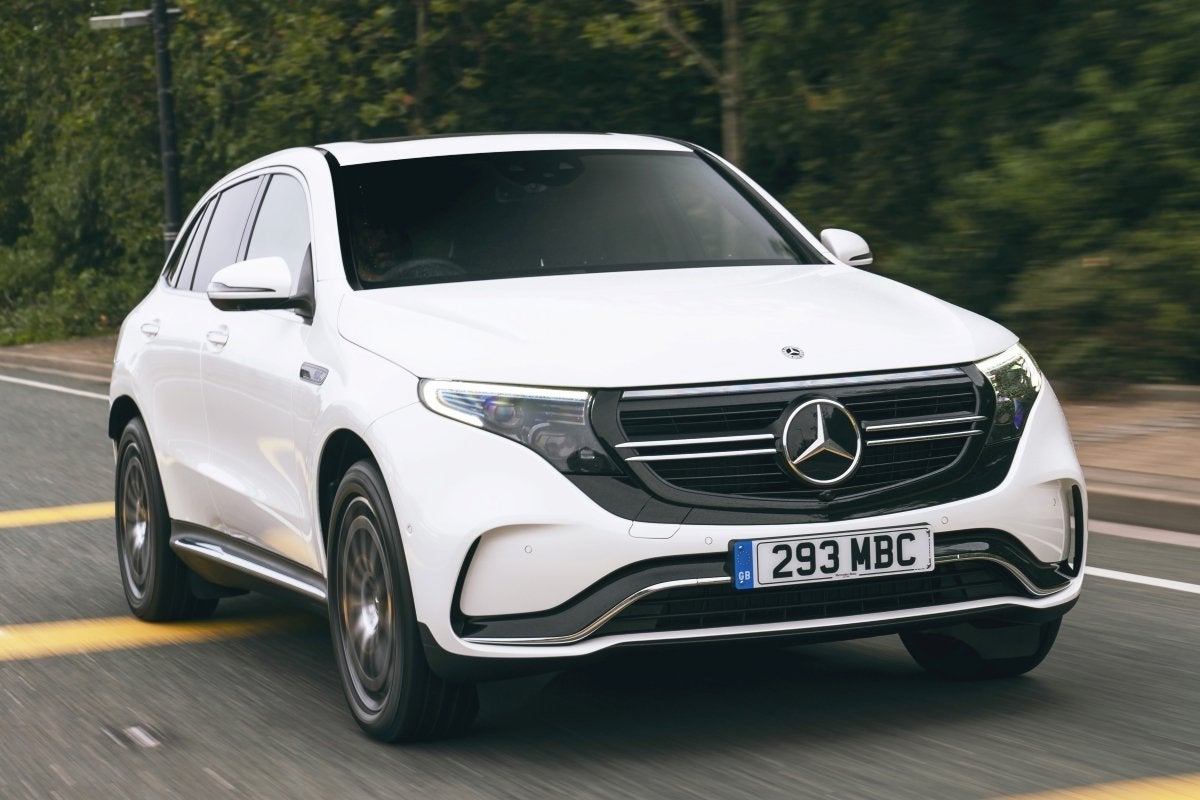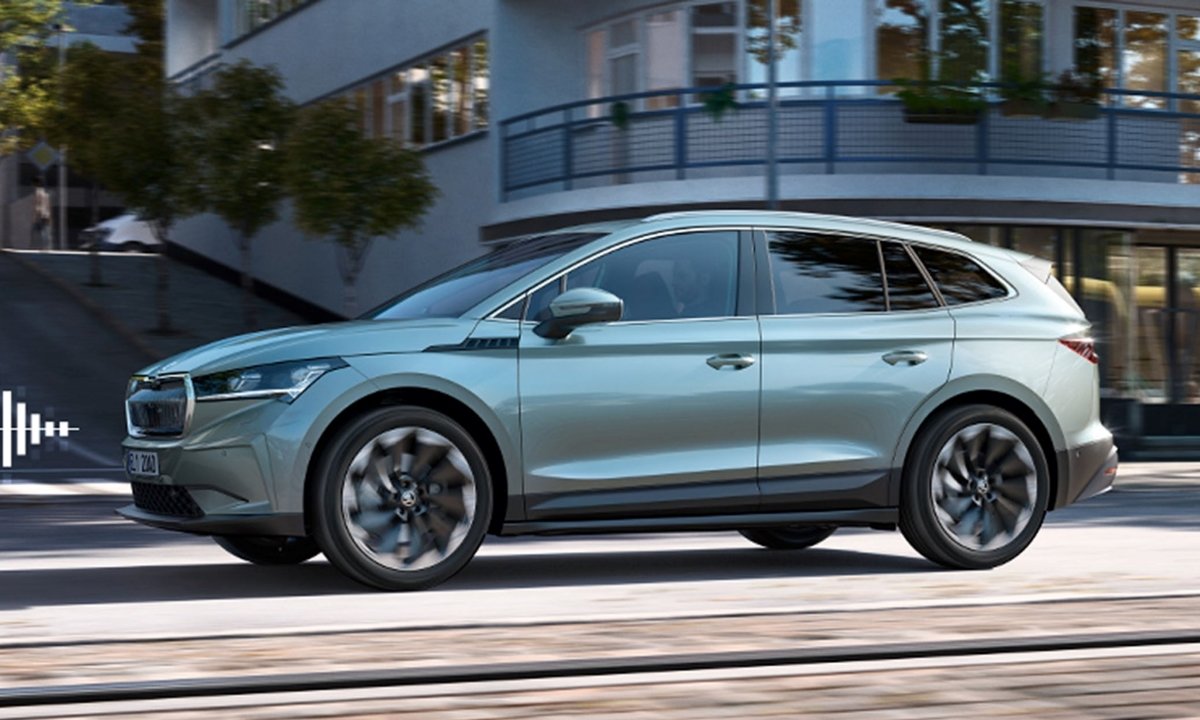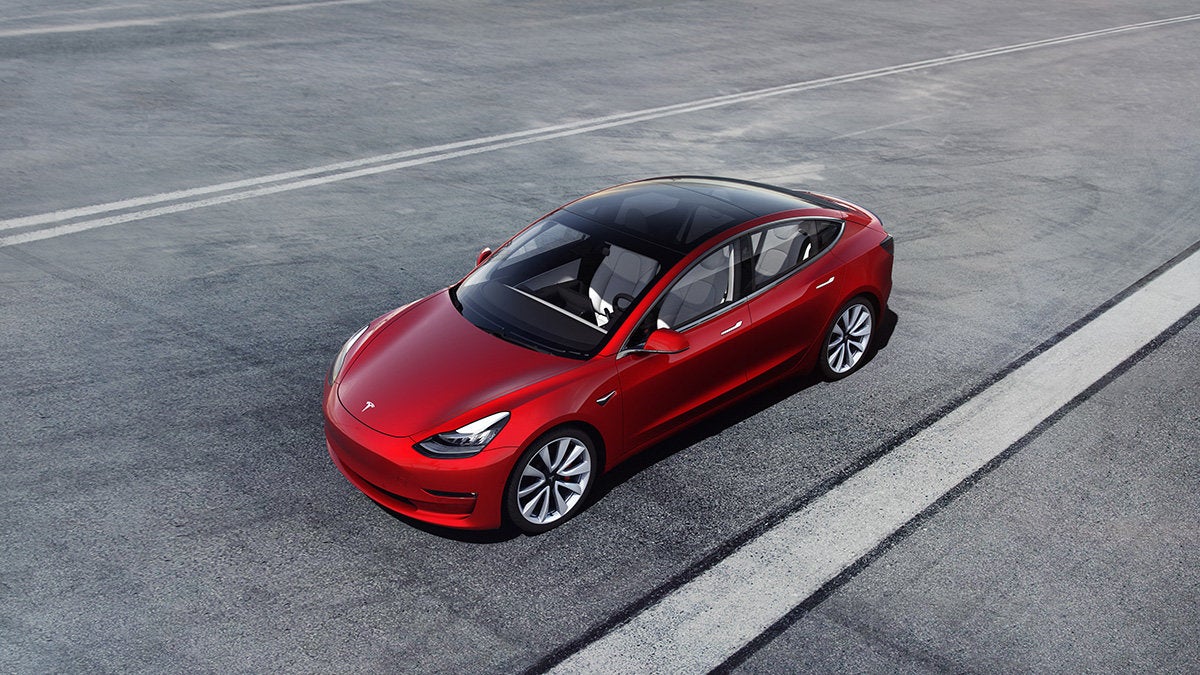Electric vehicles have been highly sought after by company car drivers since the the government slashed benefit-in-kind (BIK) tax rates for electric cars in 2020. Fleets have gone mad for them ever since, and there is no sign of that slowing down.
At the time of writing, all pure pure electric cars (i.e. those that run only on electric power and create zero CO2 emissions; hybrids and plug-in hybrids are another matter) were in the 2% BIK tax band – the lowest there is. They are destined to stay there until the 2025/2026 tax year, when rates will rise to 3%, and there will be a 1% rise each year after that, ending at 5% in the 2027/2028 tax year. In every case, that’s massively lower than company car tax for petrol cars and diesel cars, making them much more affordable to run as company cars due to lower tax bills, and that’s on top of the reduced running costs of an EV.
Below are some of our top picks for those looking to run an EV as a company car.
Best Electric Company Cars of 2024
- BMW i4
- Ford Mustang Mach-E
- Hyundai Kona Electric
- Jaguar I-Pace
- Kia Niro EV
- Mercedes-Benz EQC
- Skoda Enyaq
- Tesla Model 3
- Volkswagen ID.Buzz
BMW i4 (2021-)
The BMW 3 Series was – and, to a point, still is – an absolute staple of the company car market. Before electric vehicles took off, a 320d Efficient Dynamics was the go-to executive saloon for many a middle manager, courtesy of its pin-sharp rear-wheel drive handling, top build quality, and badge appeal. Those same qualities can be found in the zero emissions i4 – a pure electric version of the BMW 4 Series Gran Coupe. It has an electric range of between 337 and 352 miles on a single charge, which is up there with the long range versions of the Tesla Model 3 and the Polestar 2 (neither of which are bad company car choices, either), and should be enough for even high-mileage corporate drivers.
The standard i4 eDrive40 uses a single motor with 335bhp to drive the rear wheels, while the 536bhp BMW i4 M50 gets dual electric motors and all-wheel drive, and is also one of the first electric cars to get treatment from the German firm’s M performance division, along with the BMW iX M60 that arrived at the same time. Whichever you pick, you get an exemplary driving experience, along with a classy interior and fabulous infotainment tech.
BMW i4 Review
Search for a BMW i4 on CarGurus
Ford Mustang Mach-E (2021-)
Electric SUVs are about the most appealing new cars on sale, so if you can make one that’s relatively affordable, has some street cred (thanks, V8 Mustang), and is really good to drive, then you’re edging into best electric cars territory. That’s exactly what Ford did with the Mustang Mach-E; it’s among the better value models on our list, so likely to appear on more company cars drivers’ choice lists.
It’s a similar size to the Jaguar I-Pace and the Mercedes EQC and has an abundance of power, so it’s good for the the 62mph sprint in some six seconds or less. The Mach-E is offered with two battery sizes, 68kWh (Standard Range) and 88kWh (Long Range). On top of that, both are available with either rear-wheel drive or four-wheel drive, which results in an official WLTP range of between 248- and 379 miles.
Ford Mustang Mach-E Review
Search for a Ford Mustang Mach-E on CarGurus
Hyundai Kona Electric (2023-)
The Hyundai Kona Electric has always been one of the more popular electric car choices in the UK, and that’s despite the first-generation car being flawed in quite a variety of ways. Those flaws included its plasticky cabin and its cramped rear seats. Now that the second-generation Kona has arrived, though, these flaws have been well and truly rectified, thanks to a larger cabin with funky design and a fairly high-grade finish.
It looks the business, too, with futuristic styling inspired by the bigger Hyundai Ioniq 5. The Kona Electric is the best car in the Kona line-up to drive, too, and by some considerable distance, delivering a smoother ride and better refinement - due in no small part to its quieter electric motor - than its combustion-engined cousins. What’s more, prices are reasonable and equipment is generous, even on the entry-level model.
Hyundai Kona Review
Search for a Hyundai Kona on CarGurus
Jaguar I-Pace (2018-)
The Jaguar I-Pace is capable of converting even the staunchest EV sceptic. It's extremely quick, and handles superbly for such a big and heavy SUV. You might miss the rumbling exhaust note of a powerful internal combustion engine, but the 'whoosh' from the electric drivetrain is like a sci-fi starship engaging warp drive.
Of course, the boss still needs to sign off on the considerable cost of leasing one, but if the Jag falls within budget and you can live with a real-world range of around 225 miles, it's a compelling proposition. The Mercedes-Benz EQC is a bit more special inside, but there's not a lot in it. The I-Pace is a little smaller, though, so if space is a priority, the Mercedes is a better bet. However, if you value driver appeal as highly as low tax bills, then the I-Pace is hard to beat.
Jaguar I-Pace Review
Search for a Jaguar I-Pace on CarGurus
Kia Niro EV (2022-)
The Kia Niro EV is the successor to the popular Kia e-Niro. The styling was overhauled along with the name, but this is still a very evolutionary progression from that highly successful electric hatchback and, in fact, carries over the same 64.8kWh battery pack and front-mounted electric motor, which delivers a combined electric range of 285 miles. That’s not quite as long-range as alternatives such as the Skoda Enyaq iV 80, but it is slightly longer than the MG ZS EV and 58kWh VW ID.3 manage, and longer even the entry-level Hyundai Ioniq 5.
It doesn't handle with the verve of a Tesla Model 3, and it can't match the Tesla's performance figures. However, it's more than quick enough in everyday driving, and covers mile after mile quietly and in comfort. It's large enough to make a practical family car too, with much more cabin space than the likes of the Renault Zoe. It may not have the 'wow' factor of a Volkswagen ID.3, but the Niro EV still has much to recommend it as a company car, not least Kia’s top-class, seven-year warranty. That won’t mean much to fleets used to newer cars, but it doesn’t do the residual values any harm – which are all-important for keeping lease rates in check.
Kia Niro EV Review
Search for a Kia Niro EV on CarGurus
Mercedes-Benz EQC (2019-)
The high list price of the Mercedes EQC translates into stiff contract hire and leasing rates. However, if your fleet manager is feeling generous, the EQC makes a great company car.
The EQC faces stiff competition from the likes of the Jaguar I-Pace, and the Jag is the one to choose if driver appeal matters most. However, the EQC is a more relaxed and comfortable car than, so it’s a fine all-rounder.
The official figures put the EQC's range at 248-252 miles, depending on the specification level. That's competitive rather than class-leading, and a 200-mile range is probably a more realistic expectation. If you can find a 100kW rapid charging point, an 80% battery top-up should take around 40 minutes.
Mercedes-Benz EQC Review
Search for a Mercedes-Benz EQC on CarGurus
Skoda Enyaq (2021-)
Like the similar Volkswagen ID.3, the Skoda Enyaq iV is is not an electrified version of a regular car, but has been designed as an EV from the start, with no intention of ever selling a version powered by an internal combustion engine.
That approach means there are no compromises to allow the same platform to support different types of powertrain. So although the Enyaq is shorter than a Skoda Kodiaq, it's absolutely huge inside, with exceptionally generous passenger and boot space. Even in the back of the car, there's loads of room for passengers to stretch their legs, and the luggage capacity puts many estate cars to shame.
There's a choice of different battery sizes, depending on budget and how much range you need. The bigger battery gives the Enyaq iV an official range of up to 316 miles. If it lives up to that in practice, the Skoda will be one of the best long-distance EVs on the market. For such a large and roomy car the price is sensible, and leasing rates should bring the Enyaq within reach of many company car drivers.
Skoda Enyaq Review
Search for a Skoda Enyaq on CarGurus
Tesla Model 3 (2018-)
Something that shouldn't be overlooked, when comparing Tesla to its rivals, is the charging network. If you want an EV to travel long distances on the motorway, and don't want to waste time waiting for a spare charger point, the size and the speed of the Tesla Supercharger network is a huge advantage. That would only count for so much if the cars weren't any good, but the Model 3 is arguably Tesla's best effort yet. It's almost as practical and as quick as Tesla's more expensive models, but with a much lower price and keener contract hire and leasing rates.
It's good to drive, with nimble handling for something so heavy, and the rapid acceleration for which Tesla is renowned (the fastest versions have the pace to trouble a Porsche Taycan). Take your pick from versions which prioritise range or outright performance, with a choice of rear- and four-wheel drive models, too.
The Model 3 doesn't have an awful lot of rear legroom, and the interior finish isn't up to Audi E-Tron or Mercedes EQ standards, but even so, this is one of the very best EVs for company car drivers. Alternatively, if you want something with a slightly more fashionable SUV attitude, you could opt for the Tesla Model Y instead.
Tesla Model 3 Review
Search for a Tesla Model 3 on CarGurus
Volkswagen ID.Buzz (2022-)
These days, there are some incredibly stylish cars on the electric car market, and many achieve it in different ways. For instance, the Vauxhall Mokka Electric and Honda e appeal with their futuristic styling, while and Mini Electric and Fiat 500e trade on their retro looks. In our eyes, though, no EV delivers as much visual appeal as the effortlessly funky Volkswagen ID.Buzz, which pays tribute to the retro-cool Type 2 Bus of the 1950s.
Like the Enyaq we talked about earlier, the ID.Buzz is based on the Volkswagen Group’s MEB electric vehicle platform, so it’ll come as no surprise that the big VW has many of the same attributes and abilities, those including exemplary driving dynamics, compelling range figures, unimpeachable build quality and plentiful equipment. However, it’s even roomier inside than the Skoda as well, and it won’t be long until it’s available as a seven-seater. Yes, it’s expensive, but if the company accountant signs it off, that pricetag will have a very marginal effect on your company car tax bill.
Volkswagen ID.Buzz Review
Search for a Volkswagen ID.Buzz on CarGurus
Figures correct at the time of publication, but are subject to regular changes and so should be checked independently.









